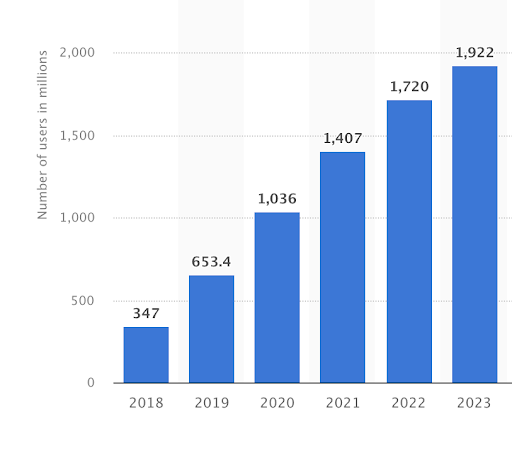How to Make Your Short Form Video Stand Out in 2025
Short-form video is essential in 2025, driving unprecedented engagement across platforms like Instagram Reels, YouTube Shorts, and TikTok. Today we'll start by analyzing the trend of short-form video. Then we'll take a quick look at the forces that led to the rise of shorts.
Let's start with what's working now.
Short-Form Video
Right now if a brand wants to reach consumers organically they should produce videos designed for Instagram Reels, YouTube Shorts, and TikTok.
Note that this is not the only video format that brands need—but it is the format that you can expect to have the widest reach with your audience.
1. A high impact-hook
The first 6 seconds of your video are more important than ever, and should be designed to "stop the scroll" as users are scrolling through their feeds.
This hook can be visual, but it can also be a storytelling hook. If you have a speaker on camera or doing a voice over, make sure they frame their message with a strong opening hook.
2. Sound Off
Verizon Media & Publicis Media found that "92% view videos with the sound off on mobile and 83% watch with sound off” according to a new report from Verizon Media and ad buyer Publicis Media."
Since most users watch videos with sound off, it's essential to use captions. If you have a storytelling-style video, your hook will likely be received via captions with the sound off.
Think of sound off as the default. Users will turn on the sound if they are engaged and want to keep watching.
3. Under 60 seconds
If you've run video marketing campaigns in the last few years, this is something that you intuitively know: short form videos get a wider reach and more engagement.
Wistia reports that "Videos that are under 60 seconds get the most engagement”
4. Vertical Video
The Vertical Video is 9x16—the way most people hold their phones.
Here's some solid research from Mulier, Slabbnick & Vermeir that goes deep into the effectiveness of the Vertical Video Format.
They found that:
"Vertical (vs. horizontal) video ads evoke higher consumer interest and engagement."
"Vertical (vs. horizontal) video ads increase processing fluency of the video ad."
"The effort of watching the video ad on the smartphone underlies this effect."
This chart analyzes Facebook video ad plays, comparing vertical and horizontal video:
Note that vertical video gets more plays at each percentage viewed, and it has better retention overall.
Why Short-Form Video?
Now that we've outlined the format that's working today, let's take a quick look at how we got here.
What's the number one reason we're all doing short-form video? Algorithms.
Today, any brand who wants consumer reach can find it on social media. As you set your social media strategy you have to consider the incentives of everyone involved.
Think about the holding companies that own social media: Meta, TikTok, YouTube (Google), LinkedIn (Microsoft).
These companies have two goals: (1) attract and retain users on their platform; (2) monetize their platform.
As TikTok gained mass consumer popularity, they presented a new and innovative video format that became wildly popular with consumers: short-form video.
TikTok User Growth. Source: Statista
When TikTok started amassing users the other social media companies took note and quickly introduced a similar video format, competing with each other on Goal #1: attract & retain users.
This gave us Instagram Reels and YouTube Shorts.
In an effort to compete with TikTok, both Instagram and YouTube both began pushing short-form video, tweaking their algorithms to give wider distribution to videos that fit this format.
In turn, creators responded by creating more short-form videos.
As creators and audiences have continued this feedback loop of creating and viewing videos, short-form video has ascended as an essential video trend for brands in 2025.
Great Storytelling Hasn’t Changed
Even though the format and distribution of video has changed dramatically, the principles of great storytelling haven’t changed much.
The perfect format and style won’t do much for you unless you’re also telling the right story for your audience. As you think about storytelling with video, make sure to keep these principles in mind:
Start with a compelling hook to draw your audience in
Put humans (and your audience specifically) at the center of your story
Give something meaningful to your audience
Leave them with something to think about afterwards




